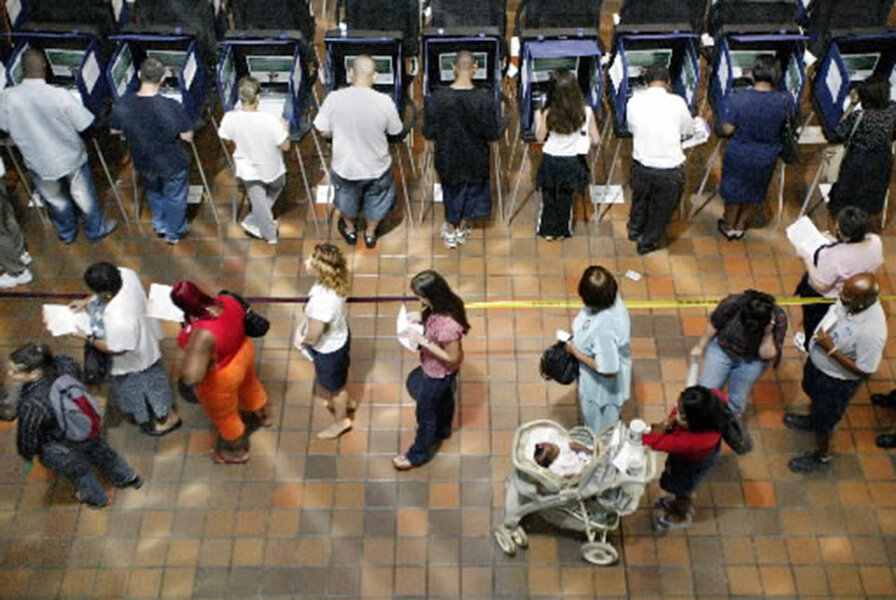Campaign 2016: Is Florida the only state that counts?
Loading...
Is Florida the key state for the upcoming 2016 presidential election? Is it the decider – whichever candidate takes its 29 electoral votes, takes the White House as well?
After spending a few hours fiddling with vote maps we think there’s a good argument that’s the case. If so, there’s a corollary: Floridians Jeb Bush and Marco Rubio might be the most electable candidates in the Republican primary race.
The foundation of this theory is the fact that over the past 15 years the nation’s electoral map has been unusually stable. University of Virginia political scientist Larry Sabato and the crew at his “Crystal Ball” newsletter make this point in their newest issue. Since 2000, 40 of the 50 states have voted for the same party at the presidential level every single time. Five of the remaining 10 states have voted with the same party in three of the four elections.
Only five states have split, voting twice for Republicans, and twice for Democrats, since 2000. These swing states are Nevada, Colorado, Ohio, Virginia, and Florida.
The upshot here is that we can allocate a theoretical baseline vote to both parties, based on how they’ve performed in the recent years. This breaks down in favor of the Democrats due to how the states get allocated.
According to “Crystal Ball,” this likely split is 247 electoral votes for Democrats, and 206 for Republicans. Remember – 270 is the magic winning number. So the Democrats are pretty close there, right at the start.
If nothing else the Democrats are close enough to have a margin for error. They could lose one or both of the biggest swing states and still put together a victory.
Republicans? They might not have that luxury.
“If Republicans lose either Florida or Ohio, [their] nominee has no realistic path to victory,” write Professor Sabato, Kyle Kondik, and Geoffrey Skelley in Politico.
Of these, we’d put the emphasis on Florida. A GOP loss in Ohio wouldn’t the end the contest right there – theoretically you can put together a map that leads to a Republican victory without the Buckeye State. If you squint. But Florida’s bigger. It’s the ballgame.
At Hot Air the right-leaning Allahpundit put together his own map and came up with the same conclusion. Take the Democratic base of 247 electoral votes from likely- and leaning-blue states, add Florida’s 29, and the result is “President Hillary Clinton.”
“In theory, Hillary Clinton could campaign exclusively in Florida for the next 18 months and still be the odds-on favorite to win the presidency,” writes the conservative commentator.
So Florida’s indeed a GOP must-win. The good news for Republicans is that the Sunshine State typically leans a bit red at the presidential level. And two Floridians are running for the party nomination.
It’s not just journalistic folk wisdom; presidential candidates really do have an advantage in their home state. So Jeb Bush, or Marco Rubio, come on down. Picking either as the GOP standard-bearer could give the party a tiny yet important advantage.
In the end, we think a lot of what’s currently happening in campaign 2016 makes more sense if you think about it in the context of Florida’s importance. Why is Mr. Bush running now, having skipped 2012 and been out of office for years? Florida! Why is Mr. Rubio giving up a safe Senate seat for an underdog presidential bid? Florida – he’s trying to take advantage of a window of opportunity that might close in years to come.
Why has Hillary Clinton outflanked President Obama on the left on immigration? Florida – excepting New Mexico, Florida has the highest percentage of Hispanic voters among swing states. Why has Republican hopeful Mike Huckabee launched a full-throated defense of Social Security and Medicare, inflaming fiscal conservatives? Perhaps he’s counted all those Florida retirees.
OK, some of this might be overreaching. It’s possible the tectonic plates of American vote distribution are about to suddenly shift, ending the stability of the electoral map and rendering this analysis moot.
But don’t be surprised if Bill Clinton decides 2015 would be a great time to buy a retirement condo in Bradenton.








